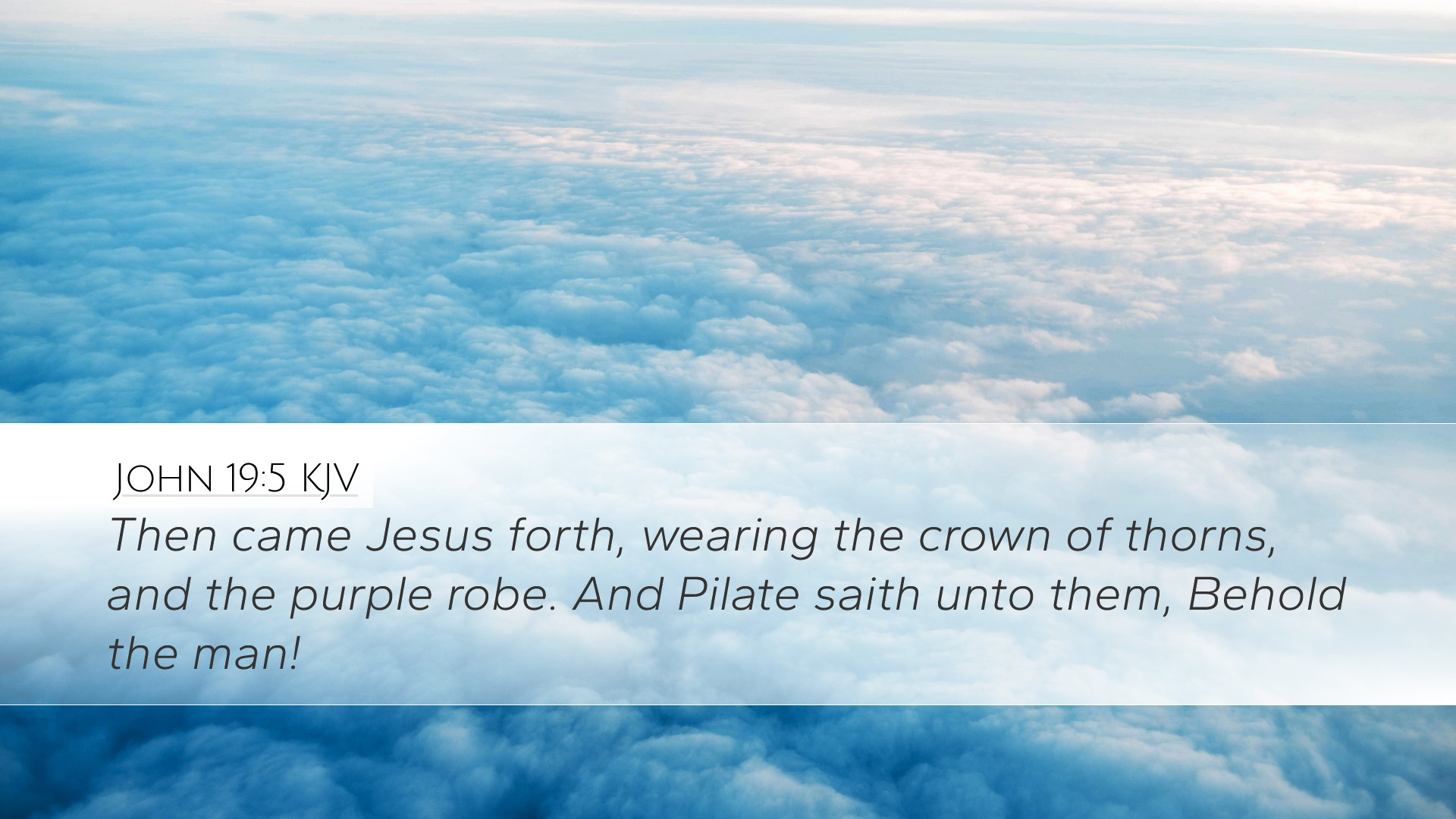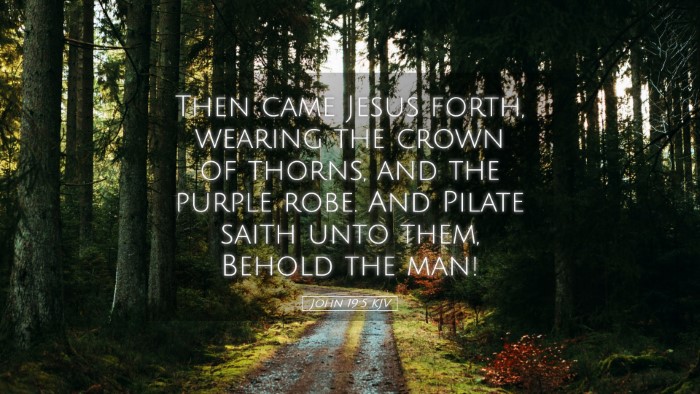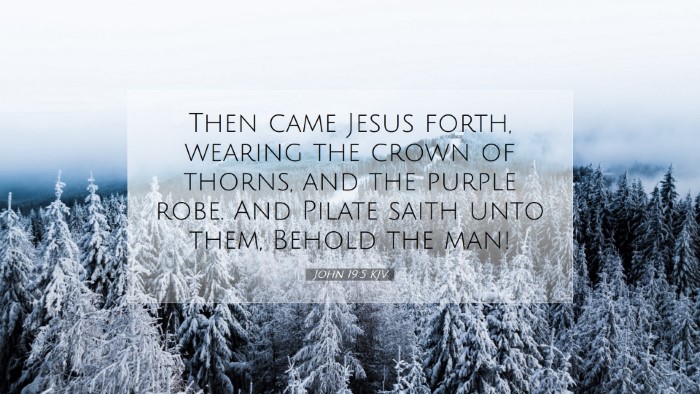Commentary on John 19:5
Verse: "Then Jesus came out, wearing the crown of thorns and the purple robe. And Pilate said to them, 'Behold the Man!'" (John 19:5)
Introduction
The passage of John 19:5 presents a pivotal moment that encapsulates the culmination of Christ's humiliation and the irony of His kingship. In this commentary, we will examine the significance of the crown of thorns, the purple robe, and the proclamation by Pilate, drawing insights from various public domain commentaries by Matthew Henry, Albert Barnes, and Adam Clarke.
Contextual Analysis
This verse comes during the trial of Jesus before Pontius Pilate, after He has been scourged and mocked by the soldiers. Pilate seeks to elicit sympathy for Jesus from the crowd by presenting Him in a derisive royal attire. The context is crucial for understanding both the historical and theological implications of these actions.
Historical Background
- The Roman Governance: Pilate was the Roman governor, and the Jews had handed over Jesus to him to secure His execution. This act underscores the tension between Roman authority and Jewish leadership.
- The Mockery of Justice: The draping of the purple robe and the placement of a crown of thorns symbolize the mockery of Jesus' claim to kingship. In Roman culture, purple was a color reserved for royalty, and the crown was a symbol of sovereignty.
Symbolism and Theological Implications
Crown of Thorns
The crown of thorns represents the suffering and humiliation that Jesus willingly endured for humanity. Matthew Henry notes that this crown, made of thorns, signifies the curse of sin that fell upon the earth as a result of the Fall (Genesis 3:18). The thorn-crowned head of Christ juxtaposes the glory of His divine kingship with the reality of human sinfulness.
Purple Robe
The purple robe worn by Jesus is emblematic of a royal illusion, highlighting the deep irony where those mocking Him were unwittingly acknowledging His true dignity. Albert Barnes comments on how the robe further emphasized the scorn heaped upon Jesus, suggesting that while He is mocked as a king, He truly is the King of kings.
Examination of Pilate's Declaration
Pilate’s declaration, “Behold the Man!” serves multiple purposes:
- A Symbolic Revelation: This statement draws attention to Jesus as the embodiment of humanity, suffering under the weight of injustice.
- A Testimony of Innocence: Pilate, in his own flawed understanding, may have intended to present Jesus as a man unworthy of the death penalty, though his subsequent actions suggest a different conclusion.
Adam Clarke points out that Pilate’s declaration ultimately reveals both the depth of human depravity and the innocent nature of Christ, further setting the stage for the events that would lead to the crucifixion.
Pastoral Application
This passage offers profound insight for pastors and spiritual leaders:
- The Nature of Christ's Kingship: Jesus' willingness to face humiliation prompts believers to reflect on the nature of genuine leadership, which is often marked by servanthood rather than dominion.
- The Reality of Suffering: The crown of thorns invites the faithful to find solace in their own sufferings, recognizing that Christ shares in our pain and offers redemption through it.
- Courage to Stand for Truth: Believers are called to proclaim truth amidst societal pressure—much like Pilate struggled to do—recognizing that even in mockery, Christ's identity remains untainted.
Conclusion
John 19:5 serves as a poignant reminder of the paradoxes within Christ's identity. Through His mockery, suffering, and kingship, believers are offered a richer understanding of redemption. The insights drawn from the commentaries of Henry, Barnes, and Clarke enrich our comprehension of the text, inviting deeper theological reflection and pastoral wisdom.


